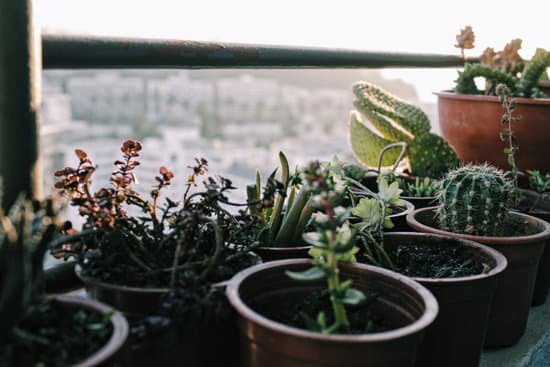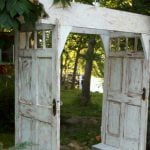Are you struggling to make the most of your small garden space? In this article, we will explore smart ideas for small gardens to help you maximize your outdoor oasis. Small gardens may present unique challenges, but with the right strategies and creativity, you can transform them into stunning and functional spaces that bring joy and beauty to your home. From container gardening to vertical design elements, we will uncover a variety of innovative concepts to elevate your small garden.
When it comes to small gardens, space is at a premium. However, with the right approach, you can create a lush and inviting environment that makes the most of every inch. By incorporating smart ideas for small gardens, you can turn even the tiniest outdoor space into a thriving paradise. Whether you’re working with a balcony, patio, or courtyard, there are numerous techniques and design elements to consider in order to make your small garden dreams a reality.
Throughout this article, we will delve into various strategies for optimizing small garden spaces. From container gardening and vertical planters to compact furniture and low-maintenance landscaping, we will offer practical advice and creative inspiration for transforming your small garden into an enchanting retreat. So let’s dive in and explore the endless possibilities of smart ideas for small gardens.
Container Gardening
Tips for Choosing Containers and Plants
When choosing containers for small gardens, opt for versatile options such as hanging baskets, window boxes, or vertical planters that can be attached to walls or fences. Select containers that complement the overall aesthetic of your garden and consider using a variety of sizes to add visual interest.
Additionally, prioritize plants with compact growth habits and those that thrive in confined spaces. Look for dwarf or bush varieties of vegetables and fruit trees, as well as low-maintenance flowering plants like petunias or geraniums.
Creative Ways to Incorporate Containers
Incorporating containers into your small garden design can be a creative endeavor; mix and match different types of pots to create an eclectic look or arrange them in visually appealing groupings. Utilize vertical spaces by hanging baskets or installing wall-mounted planters to maximize space without sacrificing style.
Additionally, consider incorporating raised beds or troughs to create different levels within your garden. By thinking outside the box with your container choices and placement, you can bring personality and visual interest to your small garden space.
Overall, container gardening offers endless possibilities for creating a lush and vibrant garden in limited space while providing the flexibility to change up the layout based on seasonal preferences or evolving design ideas.
Vertical Gardening
When it comes to small gardens, the concept of vertical gardening can be a game-changer. By utilizing vertical space, gardeners can maximize their planting area and create a stunning visual display. Here are some smart ideas for implementing vertical gardening in small outdoor spaces:
- Vertical Garden Structures: Consider installing trellises, pergolas, or wall-mounted planters to take advantage of vertical space. These structures not only provide support for climbing plants but also add dimension and visual interest to the garden.
- Suitable Plants: When selecting plants for vertical gardening, opt for climbers, creepers, and vining varieties that thrive in upright environments. Popular choices include ivy, jasmine, roses, and even edible crops like cucumbers and tomatoes.
- Hanging Gardens: Another creative way to incorporate vertical elements is through hanging gardens. Hang baskets or containers from pergolas, fences or overhangs to introduce greenery at eye level and above.
By embracing these smart ideas for small gardens, individuals can transform limited outdoor spaces into lush green sanctuaries that are brimming with life and beauty.
Micro Gardening
Practical Tips for Micro Gardening
When engaging in micro gardening, it’s important to choose crops that are well-suited to small spaces. Some popular options include cherry tomatoes, salad greens, herbs, and compact fruit varieties such as strawberries. Additionally, vertical gardening techniques can be used to grow vining plants like cucumbers and peas without taking up valuable ground space.
To further optimize limited space, consider utilizing tiered planters or hanging baskets to make the most of vertical areas. These not only add visual interest to the garden but also provide ample growing space for a variety of plants. Additionally, interplanting different crops within the same container or raised bed can maximize yields and create an aesthetically pleasing arrangement.
Innovative Micro Gardening Techniques
In addition to traditional containers and raised beds, micro gardeners can experiment with inventive techniques such as square foot gardening or companion planting. Square foot gardening involves dividing growing areas into square-foot sections and tightly spacing plants within each section to achieve high yields in a small space.
Companion planting is another smart idea for small gardens that involves arranging compatible plants together based on their beneficial properties. For example, planting marigolds alongside vegetables can help repel pests naturally while also adding color and diversity to the garden.
By implementing these innovative micro gardening techniques, even the tiniest outdoor spaces can be transformed into productive and visually appealing mini-gardens that provide an abundance of homegrown produce and floral beauty.
Compact Furniture and Design Elements
Small gardens present a unique set of challenges when it comes to designing and furnishing outdoor spaces. However, with the right approach, you can maximize the use of space and create a beautiful garden that is both functional and visually appealing. One smart idea for small gardens is to utilize compact furniture and design elements that are specifically tailored to limited outdoor areas.
When it comes to furniture for small gardens, it’s essential to choose pieces that are multi-functional and space-saving. For example, consider investing in foldable or stackable chairs and tables that can be easily stored when not in use.
Additionally, look for furniture with built-in storage compartments to minimize clutter and make the most of the available space. Another smart idea is to opt for lightweight but durable materials such as aluminum or rattan, which can withstand outdoor conditions while remaining easy to move around as needed.
In terms of design elements, vertical features such as trellises, hanging planters, and wall-mounted shelves can help save precious ground space while adding visual interest to your small garden. Incorporating mirrors strategically can also create an illusion of depth, making the garden feel larger than it actually is. Furthermore, using modular design elements like interlocking pavers or sectional seating allows for flexibility in arrangement and maximizes versatility in a confined area.
| Compact Garden Furniture | Benefits |
|---|---|
| Foldable Chairs and Tables | Easy storage when not in use |
| Lightweight Materials | Durable yet easy to move around |
| Built-in Storage Compartments | Minimizes clutter in small spaces |
By incorporating these smart ideas into your small garden design, you can create a welcoming outdoor oasis that makes the most out of limited space while still being stylish and functional.
Dual-Purpose Features
In small gardens, every square inch of space counts, which is why incorporating dual-purpose features can be incredibly beneficial. By choosing multi-functional elements for your garden, you can maximize the available space while adding practical and aesthetic value to your outdoor area. Here are some examples of dual-purpose features that work well in small gardens:
1. Garden Benches with Storage: Opt for garden benches that come with built-in storage compartments. These pieces provide seating as well as a convenient place to store gardening tools, cushions, or other outdoor essentials.
2. Vertical Gardening Walls: Utilize vertical garden structures not only for growing plants but also as a privacy screen or decorative focal point in your small garden. Incorporating greenery into vertical surfaces adds visual interest while saving precious ground space.
3. Folding Tables and Chairs: When entertaining in a small garden, consider furniture that can be easily folded and stored when not in use. This allows you to create more open space for gatherings or activities while maintaining the option for outdoor seating.
4. Garden Pathways with Solar Lighting: Install pathway lighting that doubles as solar-powered illuminators at night. These features not only guide guests through your garden but also enhance the ambiance and safety of your outdoor space after dark.
By integrating dual-purpose features into your small garden design, you can create a multi-functional and visually appealing outdoor oasis without sacrificing valuable space.
Remember, smart ideas for small gardens involve strategic planning and thoughtful consideration of how each element can serve more than one purpose in your limited outdoor environment.
Low-Maintenance Landscaping
When it comes to small gardens, low-maintenance landscaping is essential for creating a beautiful outdoor space that doesn’t require excessive upkeep. With limited room to work with, the last thing you want is a garden that demands constant care and attention. To achieve a low-maintenance garden, it’s important to select plants and design elements that are well-suited for small spaces and require minimal upkeep.
One smart idea for small gardens is to opt for low-maintenance plants such as succulents, ornamental grasses, and native species that are adapted to the local climate. These plants typically require less water, pruning, and fertilization, making them ideal choices for a small garden where space is at a premium. Additionally, incorporating hardscaping elements such as gravel pathways or stone patios can help reduce the need for regular maintenance, while still adding visual interest to the garden.
For those who want a lush green lawn in their small garden but don’t have the time or resources to maintain it properly, there are artificial grass options available that provide the look of real grass without the need for mowing and watering. This allows homeowners with small gardens to enjoy a classic lawn aesthetic without the high maintenance requirements.
Incorporating low-maintenance landscaping into a small garden not only saves time and effort but also allows for a more sustainable and eco-friendly outdoor space. By selecting the right plants and design elements, homeowners can create a beautiful garden that enhances their outdoor living experience without becoming a burden on their time or resources.
| Benefits of Low-Maintenance Landscaping | Examples of Low-Maintenance Plants |
|---|---|
| Requires minimal upkeep | Succulents |
| Environmentally friendly | Ornamental grasses |
| Increase sustainability | Native species |
Smart Irrigation and Water Conservation
When it comes to small gardens, smart irrigation and water conservation are essential factors to consider for maintaining a healthy and thriving outdoor space. With limited area for plant growth, ensuring efficient water usage is crucial for the overall sustainability of the garden. By implementing thoughtful strategies and utilizing innovative irrigation systems, small garden owners can effectively conserve water while promoting the growth of their plants.
One smart idea for small gardens is the use of drip irrigation systems. These systems deliver water directly to the base of plants, minimizing evaporation and runoff compared to traditional overhead watering methods. Drip irrigation also allows for precise control over water distribution, ensuring that each plant receives the necessary moisture without wastage. Additionally, timers can be incorporated into these systems to further optimize watering schedules, providing plants with consistent hydration while reducing unnecessary water consumption.
Another impactful strategy for water conservation in small gardens is the incorporation of rainwater harvesting methods. By collecting rainwater from rooftops or other surfaces, gardeners can utilize this natural resource to supplement their irrigation needs. Rain barrels or cisterns can be positioned strategically within the garden to capture and store rainwater for later use, reducing reliance on traditional water sources and lowering utility costs.
In addition to smart irrigation practices, choosing drought-tolerant plants and implementing mulching techniques are valuable approaches for conserving water in small gardens. Selecting plant varieties that require minimal watering and incorporating organic mulch around their base helps retain soil moisture, reducing the frequency and volume of irrigation needed. These measures not only contribute to efficient water usage but also promote a sustainable and environmentally friendly approach to gardening.
By embracing smart ideas for small gardens such as efficient irrigation systems, rainwater harvesting, drought-tolerant plants, and mulching practices, gardeners can create beautiful outdoor spaces while conserving precious water resources. With careful planning and implementation of these strategies, small garden owners can enjoy flourishing landscapes that reflect sustainability and responsible environmental stewardship.
Conclusion
In conclusion, small gardens present unique challenges when it comes to maximizing space and creating a beautiful outdoor oasis. However, by implementing smart ideas for small gardens such as container gardening, vertical gardening, and micro gardening, it is possible to transform even the tiniest of spaces into a lush and vibrant garden.
The use of compact furniture and design elements, dual-purpose features, low-maintenance landscaping, and smart irrigation and water conservation techniques also play a crucial role in optimizing small garden designs.
By incorporating these smart ideas for small gardens, individuals can make the most of their outdoor spaces, no matter how limited they may be. Container gardening allows for flexibility and creativity in plant choices while vertical gardening takes advantage of vertical space for greenery. Micro gardening offers the opportunity to grow a variety of crops in a confined area, making efficient use of every inch of the garden.
Compact furniture and dual-purpose features add functionality without sacrificing style, while low-maintenance landscaping ensures that the garden remains beautiful with minimal effort. Additionally, smart irrigation systems help conserve water and maintain the health of the garden.
Ultimately, with thoughtful planning and strategic implementation of these smart ideas for small gardens, individuals can create stunning outdoor retreats that are both practical and visually appealing. Whether it’s a balcony garden or a tiny backyard oasis, there are endless possibilities for turning small spaces into lush green sanctuaries.
I encourage all readers to explore further into small garden design and tips to unlock the full potential of their outdoor areas. With some creativity and ingenuity, anyone can achieve a beautiful and bountiful small garden that brings joy and tranquility to their everyday life.
Frequently Asked Questions
How Do You Make a Small Garden Nice?
Making a small garden nice involves careful planning and consideration of the space available. Using containers and vertical gardening techniques can maximize the area while adding diversity in plants and flowers can create visual interest.
How Do You Maximize Space in a Small Garden?
Maximizing space in a small garden requires creative solutions such as using hanging planters, utilizing wall space for vertical gardens, and choosing compact or dwarf varieties of plants. Additionally, multi-functional furniture and clever storage solutions can help optimize the area.
How Do I Get the Most Out of My Small Garden Plot?
To get the most out of a small garden plot, it’s important to prioritize what is most important to you – whether it’s growing your own produce, creating a relaxing outdoor space, or attracting wildlife. Careful selection of plants, efficient use of space, and proper maintenance will ensure that your small garden thrives despite its size.

Welcome to my gardening blog! I am passionate about plants and enjoy sharing my knowledge and experiences with others. In this blog, I will write about everything related to gardening, from tips on how to get started to updates on my own garden projects.





